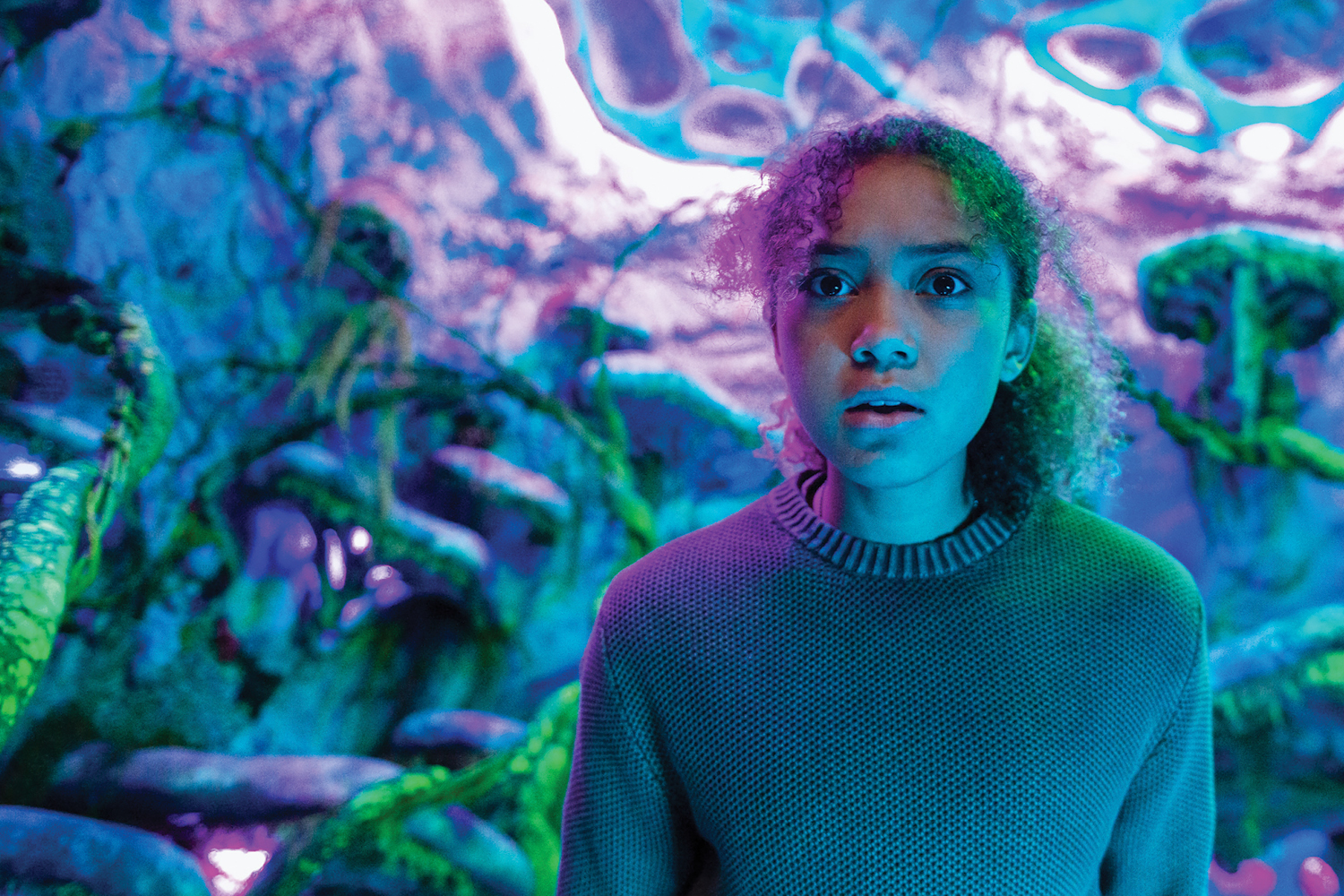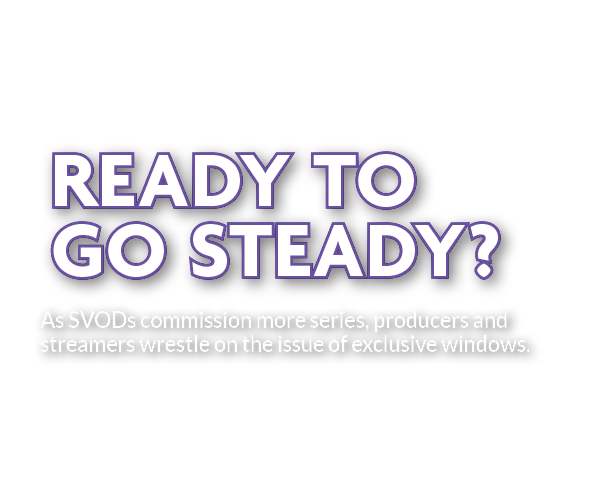Broadcasters have long been the belles of the ball—the prom queens, if you will— and with no shortage of suitors. But as they hemorrhage subscribers and ad revenue, burgeoning digital platforms have stepped forward as a shiny new alternative.
As SVODs continue to ramp up investment in original content to attract subscribers, it looks like the days of financing a show with a lead broadcaster and a couple of pre-sales are all but gone.
Streaming platforms such as Netflix, Amazon and Hulu have stepped into the role commissioning broadcasters once solely occupied. And as more SVODs crop up and the major players continue to expand globally, balancing the demands of both streaming and broadcast partners—while maintaining profitability—is becoming the new relationship dilemma for producers.
Global giant Netflix is seeking greater exclusivity as it boosts its originals slate, and typically demands a two-year window before IP owners get any broadcast rights at all. That’s up to four times longer than the traditional broadcast window between pay TV and free TV, but for producers, it’s the trade-off for Netflix paying more than broadcasters have.
“It’s not all upside, but Netflix is fully funding in those cases,” says Josh Scherba, president of DHX Media. The kids producer, distributor and broadcaster has sold co-pro series such as Chip & Potato to Netflix as worldwide exclusives.
And when broadcasters finally get their window, they want catch-up rights—episodes viewers can watch free on-demand, through cable or satellite providers or through their own digital platforms such as BBC iPlayer, Australia’s ABC iview or the recently launched CBC Gem. Yet the commissioning streamers often limit or don’t allow those episodes to air on digital at all in order to retain maximum exclusivity, effectively limiting a series’ reach.
DHX has, in some cases, carved out broadcaster catch-up rights from Netflix, although a crystal ball would come in handy.
“Particularly in animation, from the time Netflix says ‘Go’ on a series, it will likely be two years before it’s streaming. And then if it’s a two-year holdback, you’re talking about four years before you can potentially exploit linear,” Scherba says. “We all know how much the world has changed in the last four years, so it’s hard to predict what kind of catch-up rights you’re going to need four years from now.”
DHX is navigating these waters by taking a portfolio approach, parceling out its production slate to commissioners with varying models. “We’re doing some wholly owned Netflix originals, but then there are services like Hulu and Amazon Prime Video that are trying different models. They are all evolving, and we’re involved in constant conversations with them,” Scherba says.
Hulu, which is limited to the US and last year announced 23 million subscribers compared to Netflix’s 137 million, allows for more broadcaster partnerships. Its investment is nonetheless significant and on par with that of traditional commissioning broadcasters.
“We work with Hulu on the financing the same way we would with international linear,” says Kate Sanagan, Sinking Ship Entertainment’s head of sales and distribution for the Americas, French-speaking Europe and Asia-Pacific. Streamers that are open to catch-up rights usually allow up to five episodes to roll over, she adds.
Toronto-based Sinking Ship partnered with Hulu on the sci-fi series Endlings, a 12 x 30-minute live-action/CG hybrid about foster kids who encounter alien life forms. CBC is the English-Canadian partner, and Sinking Ship was also able to land presales from French Canada (SRC), the UK (CBBC), Germany (NDR), Australia (ABC), Sweden (SVT) and Norway (NRK).
Hulu plans to launch the series during the 2019/2020 holiday season, soon after which CBC can move forward with its broadcast window and exploit digital rights for one year. The series will premiere on most of the other channels in September 2020. There is even a US broadcast partner in Universal Kids, but the pay-TV channel will only get the show after a period of exclusivity on Hulu.

Tarzan and Jane received a second season order, one of the few metrics of success for Netflix releases
Build bridges, not walls
Canadian streamer Ameba, on the other hand, doesn’t commission originals. Offering AVOD and SVOD, it makes deals with international distributors (recently including Italy’s Mondo TV and Australia’s Escapade Media) for back-catalogue titles that may not have been exploited in North America. Its content is available through TiVo, Xbox 360, Roku and to Amazon Prime customers via Amazon’s Streaming Partners Program.
Ameba president Tony Havelka believes the biggest SVODs alienate the subscribers they court by forcing them to sign on to their services as the only way to get a specific piece of content.
“Instead of saying, ‘We’re going to work with the others and put our content everywhere,’ they just want to lock it up,” he says. “They think exclusivity builds a wall and it does—but it’s between them and their [potential] customers.”
Exclusivity can also hamper a show’s potential reach. The streamers focused on becoming the sole destination for their original content generally control promotion and limit it to their platforms, says Claudia Scott-Hansen, SVP of global distribution for The Jim Henson Company (TJHC), which will have 10 x 60-minute Netflix original series The Dark Crystal: Age of Resistance premiering this year.
Promotions for new series are usually for a very short window, centered around a premiere, she says. And while linear shows can be cross-promoted among channels in the same broadcast family—Turner’s Cartoon Network channel, for example, can advertise series launching on Boomerang—if Netflix viewers don’t see a new show pop up via the platform’s recommendation engine soon after release, they might never know about it.
Netflix’s potential reach is certainly significant. But preparing a show for the SVOD’s massive international audience can require around 25 language dubs, which adds significant costs and delivery pressures, because typically it wants all versions at once for the global launch.
Either the streamer or the prodco can take on the responsibility, but there’s an incentive for producers to do so.
“You need to have trusted relationships with dubbing partners that can work to scale and deliver within a short window,” says Scott-Hansen. “For an animated series of 52 x 11 minutes, it can raise your delivery costs by more than US$800,000. That said, presumably that dubbing investment also builds an opportunity to sell foreign second-window rights.”
But whether those sales can be made is debatable, as programs can depreciate over Netflix’s two-year holdback period.
“By the time a broadcaster gets its hands on that show, it’s probably no longer the show it was when you launched and had all the noise and hype. People have moved on,” says Allen Bohbot, founder and managing director of Connecticut-based 41 Entertainment, which in October saw Netflix debut the second seasons of its shows Super Monsters and Tarzan and Jane, both produced with Arad Animation.
The fact that streamers don’t share audience data presents a further challenge. “While we may believe through anecdotal reports that our show has done incredibly well, how do we convince potential [broadcast] partners, licensees and retailers without this information?” TJHC’s Scott-Hansen asks.
Merchandising is an integral part of the kids content business, but creating an exploitable brand on the backs of an exclusive SVOD launch has been elusive. While broadcasters have required viewers to return every week to watch the latest episode of their favorite show—fostering brand loyalty—kids can binge-watch a season or an entire series on an SVOD service and move on.
And that’s why producers hope for a time when streamers and broadcasters can create greater buzz around a property by eliminating exclusive windows and releasing a show together, day-and-date.
“That way everybody gets a better deal,” Bohbot says. “Netflix and a broadcaster could then each pay 50% of your budget and still participate in a meaningful way. If we can do day-and-date and producers can manage the licensing, companies like ours will be in good shape and make a little money instead of making shows just for the sake of making shows. If everyone can agree, we’ll have a business everybody can be happy with.”



























